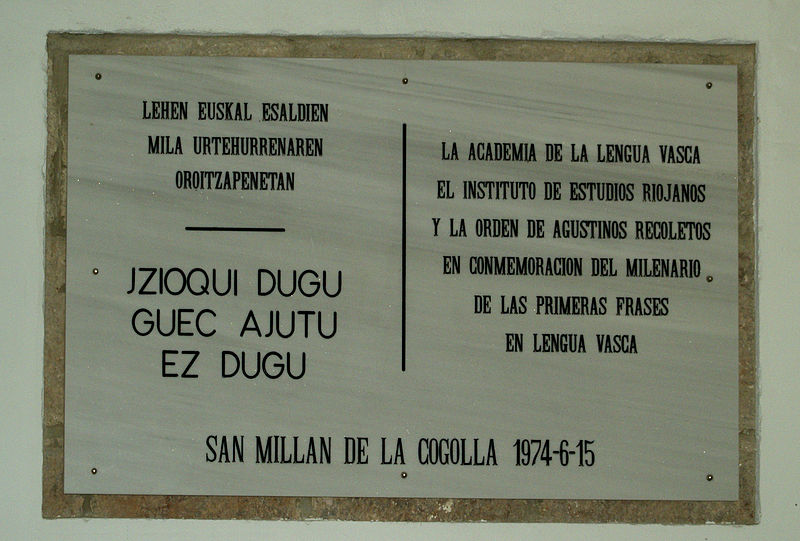Euskara, the language spoken by the Basque people, is now spoken by about 750,000 people. The language is perhaps the most singularly important feature identifying the Basque people. Indeed, the word for a Basque person in Euskara — euskaldun — means ‘one who has Euskara.’ Thus, the history of the language itself is of great interest and importance in understanding the history of the Basque people. Given that Basque has not had a strong written history, reconstructing the history of the language is challenging. The earliest known evidence for Euskara comes from a set of lead tablets from the Roman period. These tablets have the word “NESCAS” or “NISCAS” written on them, apparently referring to the modern Basque word neska, which means girl, used, in this context, to invoke the local nymphs.

- It is now accepted that Basque is related to the now-dead language Aquitanian, that Aquitanian is an ancestral form of Basque. There are inscriptions of Aquitanian names from the first centuries BC and AD that can be related to Basque words; examples include NESKATO (neskato=girl), ANDERE (andere=lady), CISSON (gizon=man), OSSO, OXSO (otso=wolf), and HERAUS (herauts=boar).
- After the lead tablets, the earliest record of Euskara is from personal names, the earliest of which is Momus, a Latin version of the no-longer-used Basque name Mome. This name appears in the cemetery of Argiñeta in Elorrio, usually dated to 883.
- The earliest known phrases in Euskara are from the so-called Emilian Glosses from the San Millán monastery in the Rioja. These phrases, from a manuscript dated to 950, are jzioqui dugu and guec ajutu-ezdugu. The meaning of these phrases isn’t completely clear.
- The earliest known example of a text connecting more than a few words together comes from a magical charm or prayer, dated to the 14th century, that was found in the cathedral of Pamplona in 1957.
- The longest preserved text we have from before the period before publication began comes from a letter written in 1537 by the first Bishop of Mexico, Joan Zumarraga, to Kattalin Ruiz Muntsaratz with the goal of arranging a marriage between his nephew and Kattalin’s daughter.
- The first printed book in Euskara is a book of poems, Linguæ Vasconum Primitiæ (“First Fruits of the Basque Language”), published in 1545 and written by Beñat Etxepare. In one of his poems, Etxepare calls for “Heuscara ialgui adi cãpora.” or Euskara jalgi hadi kanpora=Basque, go outside. He wanted Basque to be a more important language.
Sources: Etymological Dictionary of Basque by R. L. Trask, edited for web publication by Max W. Wheeler; The History of Basque by R. L. Trask.
Discover more from Buber's Basque Page
Subscribe to get the latest posts sent to your email.


3 thoughts on “Basque Fact of the Week: Earliest Written Evidence of Euskara”